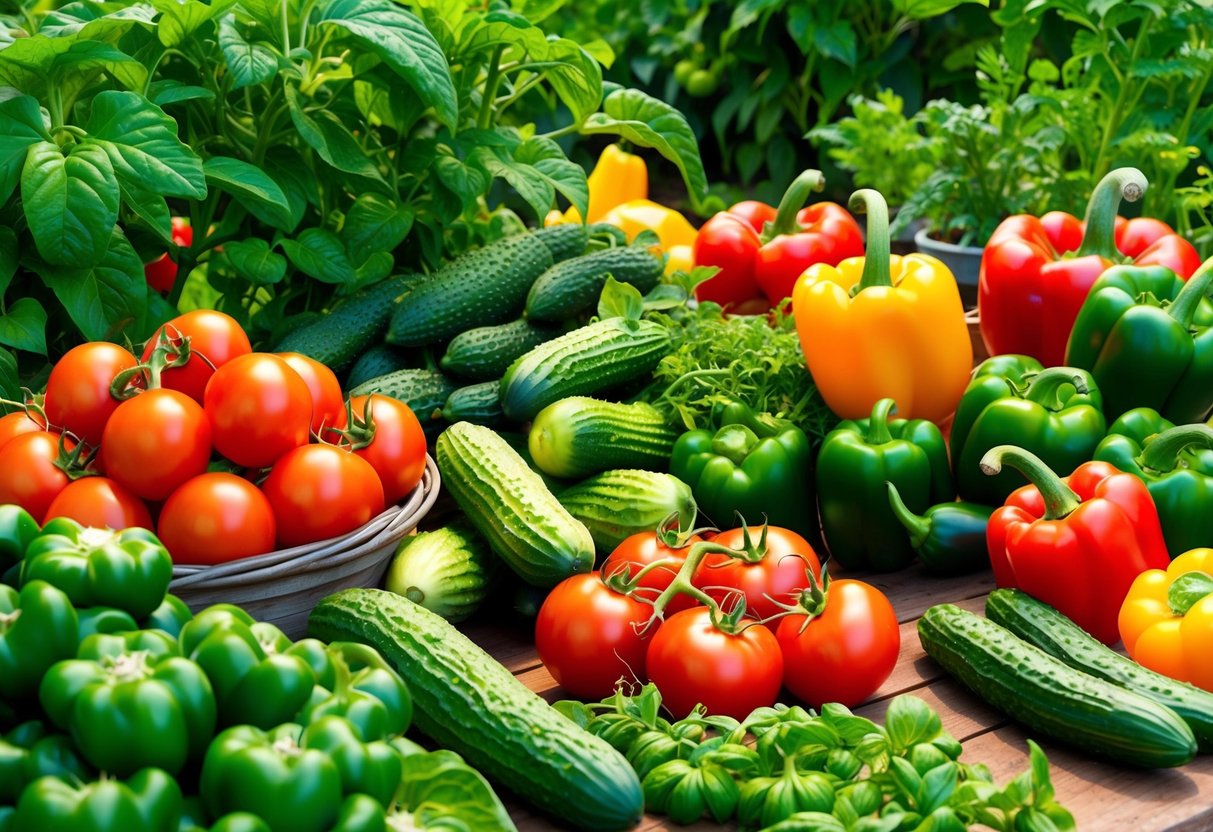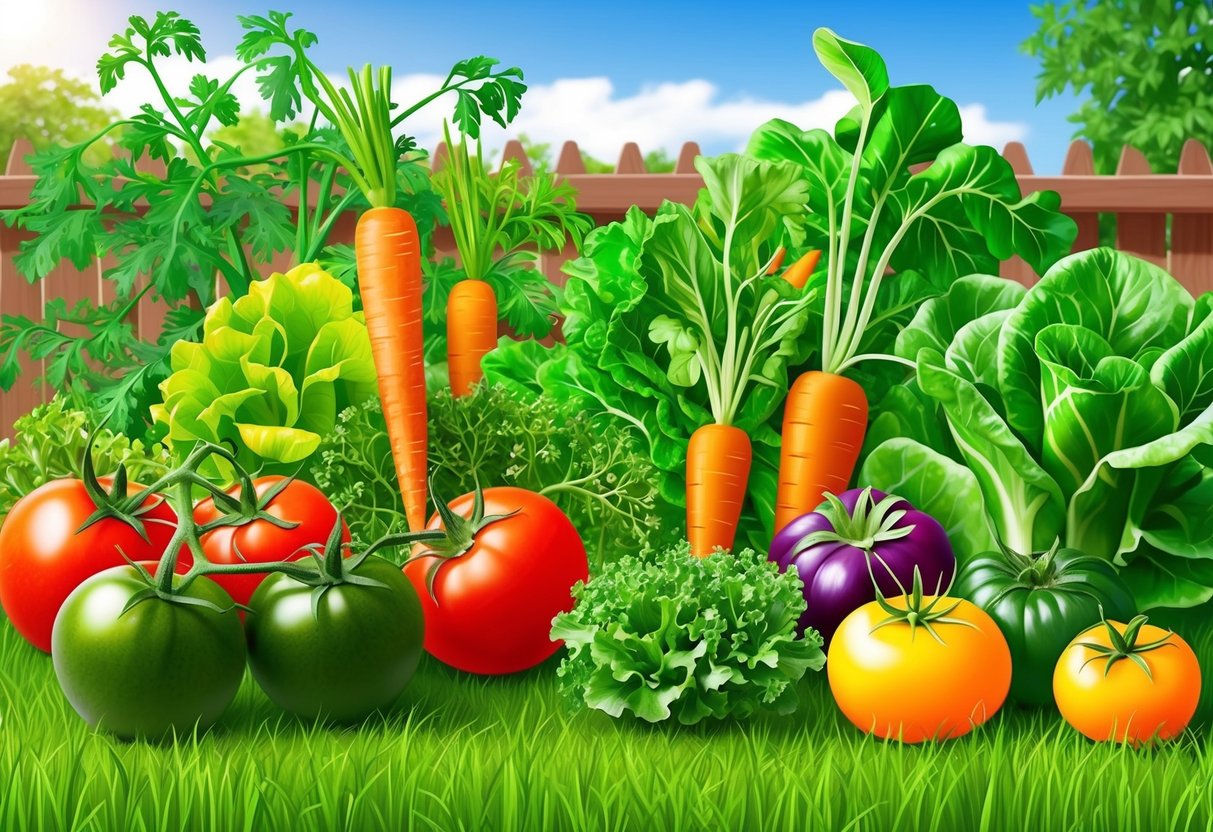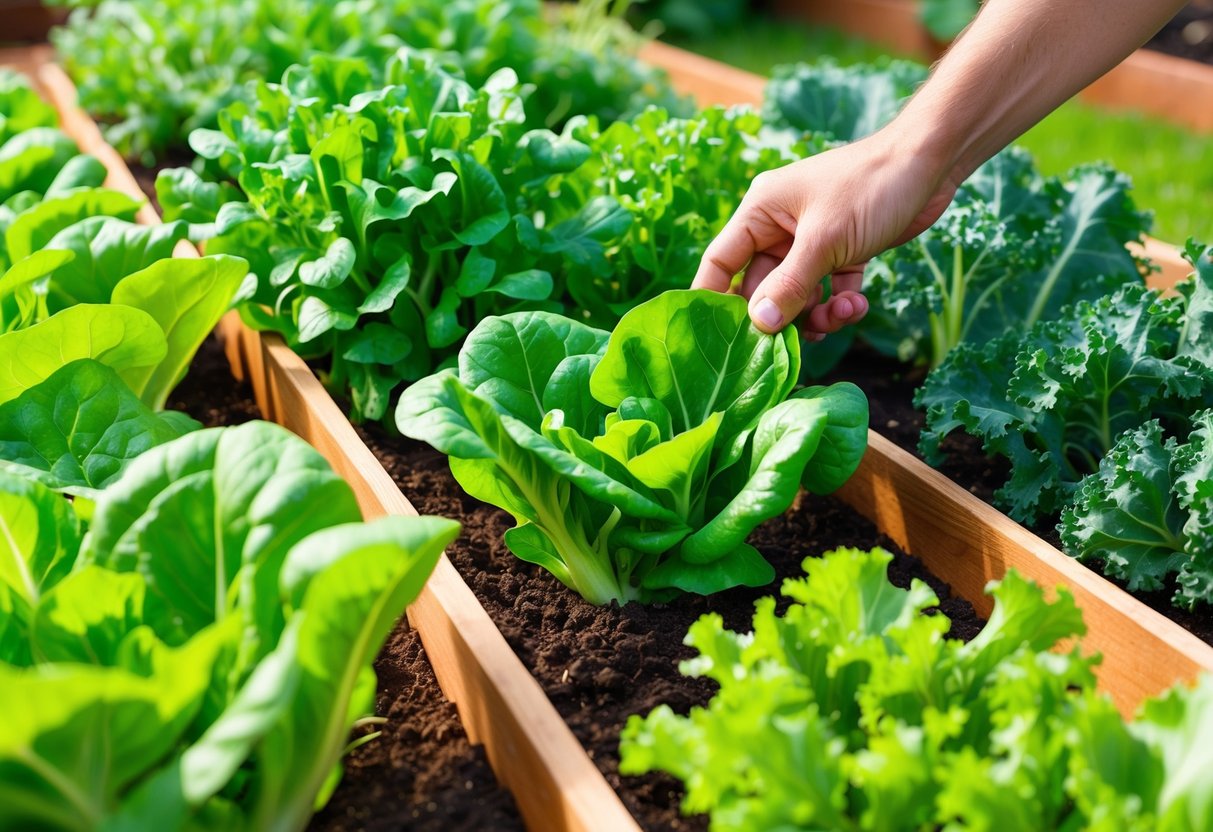
Growing your own food at home can be rewarding and straightforward, even for those new to gardening. Many beginner gardeners look for vegetables that are easy to care for and deliver generous yields with minimal fuss.
Beginner-friendly vegetables like lettuce, radishes, carrots, potatoes, and tomatoes are known for their easy growth and high productivity, making them excellent choices for those just starting their gardening journey.
Choosing the right crops ensures consistent harvests and builds gardening confidence. Vegetables such as cucumbers, cabbage, and onions thrive in home gardens and require basic care, so they fit perfectly into a beginner gardener’s plans.
Learning to grow these plants enables anyone to create a productive garden with fresh, healthy produce readily available. Those exploring easy-to-grow vegetables will discover plants that adapt well to different climates and are forgiving of common mistakes.
With the right selection, high yields and simple harvests are within reach for all aspiring gardeners.
Choosing the Best Beginner-Friendly Vegetables

Selecting suitable vegetable varieties can increase success for new gardeners. The right choices lead to higher yields even in small home garden spaces and simplify the growing process from planting to harvest.
Key Criteria for Selection
Beginners should look for vegetables that are hardy, have short growing periods, and demand minimal maintenance. Easy crops such as beans, radishes, and zucchini often deliver dependable results without complex care, making them top picks for those starting a vegetable garden.
Disease resistance is another vital factor—select varieties labeled as resistant to common issues.
Important factors to consider:
- Fast maturation: Opt for varieties like radishes and lettuce, which can be ready in just a few weeks.
- Low maintenance: Leafy greens, such as kale and rocket, thrive with moderate watering and basic weed control.
- Wide adaptability: Vegetables that suit different climate zones and garden sizes, such as carrots and bush beans, reduce the risk of failure.
Choosing seeds or seedlings well-suited to the local environment will improve both yield and ease of care. Gardeners can reference reliable lists provided by experts for the most successful choices for their home garden, such as those from the Botanic Gardens of Sydney.
High-Yield Options for Small Spaces
Small garden spaces can produce impressive harvests with the right vegetable varieties. Vegetables like bush beans, zucchini, lettuce, and radishes consistently perform well in confined areas.
Compact and container-friendly plants allow for efficient use of vertical and horizontal space. A few high-yield crops for tight spaces include:
- Leafy greens: Lettuce, spinach, and rocket mature quickly and can be grown in pots or raised beds.
- Bush beans: Compact yet productive, they are easy to harvest and provide ongoing yields.
- Radishes and carrots: These root crops grow well in small plots or deep containers, making them ideal for patio gardens.
Cool-season crops such as lettuce, garlic, and onions also have the advantage of tolerating mild frosts, adding flexibility for early or late planting. For a detailed look at suitable high-yield crops, visit Sow Much More’s guide or check the Real Simple list for more suggestions.
Top Leafy Greens for Easy Home Harvests

Leafy greens like lettuce, spinach, chard, and kale offer quick growth, repeated harvests, and a steady supply of fresh salads. These vegetables are adaptable for containers or garden beds and thrive in a wide range of climates.
Lettuce and Lettuces for Continuous Harvest
Lettuce is one of the easiest leafy greens to grow at home. Loose-leaf varieties such as ‘Oakleaf’ and ‘Salad Bowl’ allow for a continuous harvest—just pick the outer leaves and let the center keep producing.
This technique, known as “cut-and-come-again,” ensures fresh leaves for weeks. Lettuces prefer cool weather and partial shade, but many types can tolerate moderate heat if watered consistently.
For a steady supply, gardeners can sow seeds in succession every two weeks from early spring through late summer. With a fast maturity rate, some lettuces can be harvested within 30 days of sowing.
For more suggestions on beginner-friendly lettuces with high yields, visit this easy-to-grow vegetables guide.
Spinach and Chard: Reliable Staples
Spinach stands out among leafy greens for its rich nutrient profile—high in iron, calcium, and vitamins A and K. It grows rapidly in cool temperatures and can be harvested as baby leaves or left to mature.
Regular picking of outer leaves stimulates further growth and extends the harvest window. Swiss chard is a versatile staple that tolerates a range of temperatures and continues producing even in warmer weather.
Its colorful stems make it visually appealing in gardens. Both spinach and chard are suitable for containers or raised beds, contributing to a continuous harvest.
Sowing seeds every few weeks ensures young, tender greens throughout the growing season. For more on easy spinach options, see these recommended vegetables for beginners.
Kale, Collards, and Arugula
Kale and collards are hardy choices that perform well in early spring and late autumn, withstanding light frosts without damage. These greens are nutrient-dense and can be harvested as young “baby” leaves or allowed to mature.
Regular harvesting helps keep plants productive and encourages the growth of new leaves. Arugula is another fast-maturing salad green, often ready to harvest within three to four weeks.
Its peppery flavor adds variety to mixed salads and sandwiches. Arugula grows quickly from seed and is well-suited for either garden beds or containers.
For additional details on quick-growing leafy greens such as arugula, visit this beginner-friendly guide on easy home vegetables.
Salad Greens and Growing Tips
Salad greens thrive in cool, moist conditions and can be sown progressively for a long harvest period. Mixing varieties like butterhead lettuce, baby spinach, and arugula in the same bed maximizes yield and flavor.
Growing leafy greens in raised beds or containers simplifies management and improves drainage. Watering consistently and providing partial shade during hot periods prevents bolting and maintains tenderness.
Mulching with straw or compost helps retain soil moisture and regulate temperature. Most leafy greens respond well to organic fertilizers rich in nitrogen, which supports rapid leaf growth.
Regular, careful harvesting keeps plants healthy and encourages continuous harvest throughout the season.